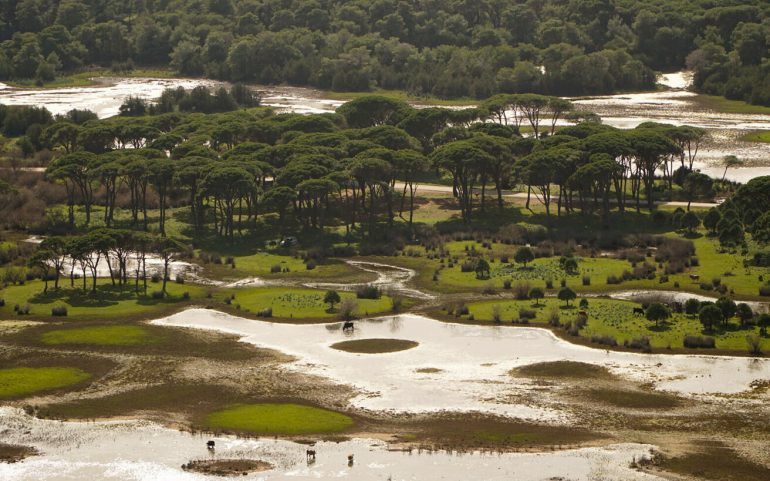There is in our country a magnificent coastal mosaic of habitats with a lush forest that reaches the beach, a beach full of dunes.
If you see the scene from above, you take an oath that it is somewhere in the Africa, the vegetation is very reminiscent of the African savannah.
Only this unique ecosystem with the coastal forest and the huge ecological importance is in Greece.
Strofilia forest is called it and you find it at the northwestern tip of the Peloponnese, in the prefecture of Achaia.
It is part of an important habitat and forms the Kotychi-Strofilia National Wetlands Park. And it includes everything from the Kotychi lagoon, Lake Prokopou and the swamp of Lamia to mountains, rivers and capes.

It is one of those places that confirms the fact that Greece will never stop surprising us with the variety of its landscapes.
This time the surprise includes many and various. The icing on the cake is fantastic beach which exists somewhere in between, composing a scene that moved as if from the Black Continent.
On the one hand the forest, the hills, the lake and the green habitats and on the other the sandy beach and the endless blue of the sea.
So where the fresh water of the lake is mixed with the salty water of the sea, something magical happens…
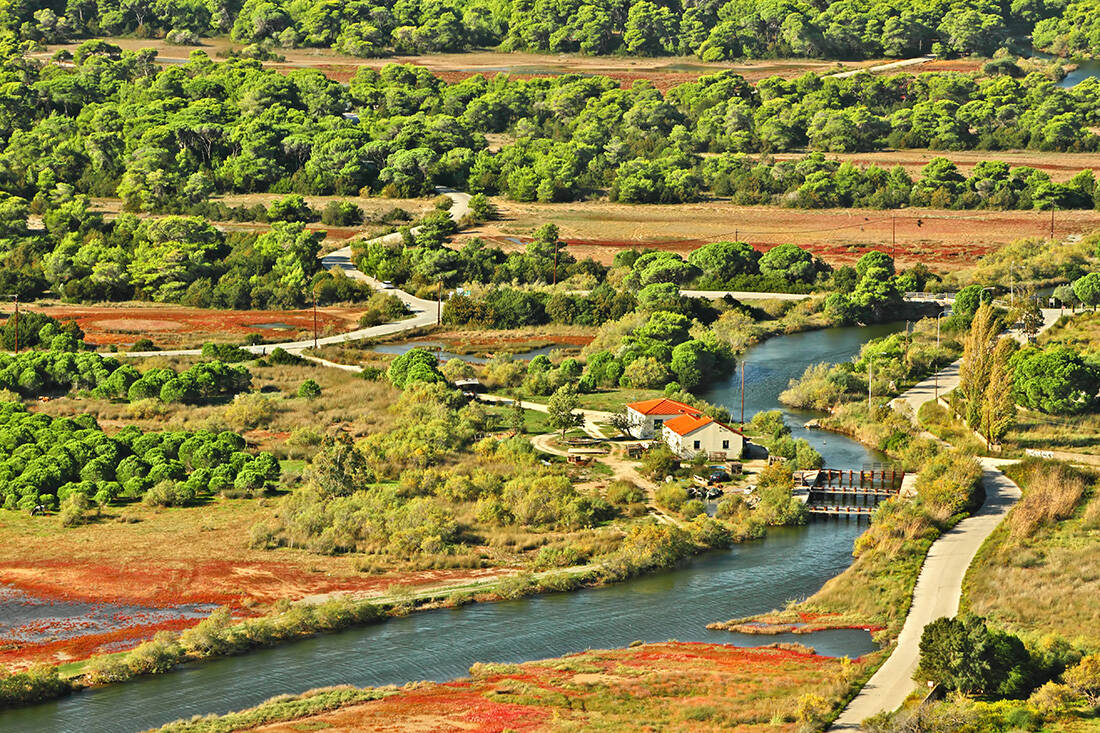
At the northwestern tip of the Peloponnese, on a ledge of land blessed by nature, is the forest of Strofilia. It is a strip of pine cones and pines that was set to separate the lagoon of Prokopos from Ionian Sea.
The Kotychio-Strofilia Wetlands National Park is an extensive network of habitats defined by the Black Mountains, the Strofilia Forest, the Lamia swamp, Lake Prokopou, the Kotychi lagoon, Lake Papa, the river Larissos and its cape Monster.
It is a magnificent setting of a total area of 143.000 acres, a protected ecosystem of incomparable beauty created with the components of Greek beauty: the blue of the sea, the green of nature and the gold of sand.
The Strofilia Forest, covering an area of 22.000 acres, is a place taken from a fairy tale. Pines, cedars, age-old pine cones, oaks, myrtles, phrygana and shrubs end up on the beach.
The pine succeeds the pine cone ("cranberry") and vice versa, as if someone decided to play with the species of trees and order them in a language of land 14 km long (and 1 km wide).
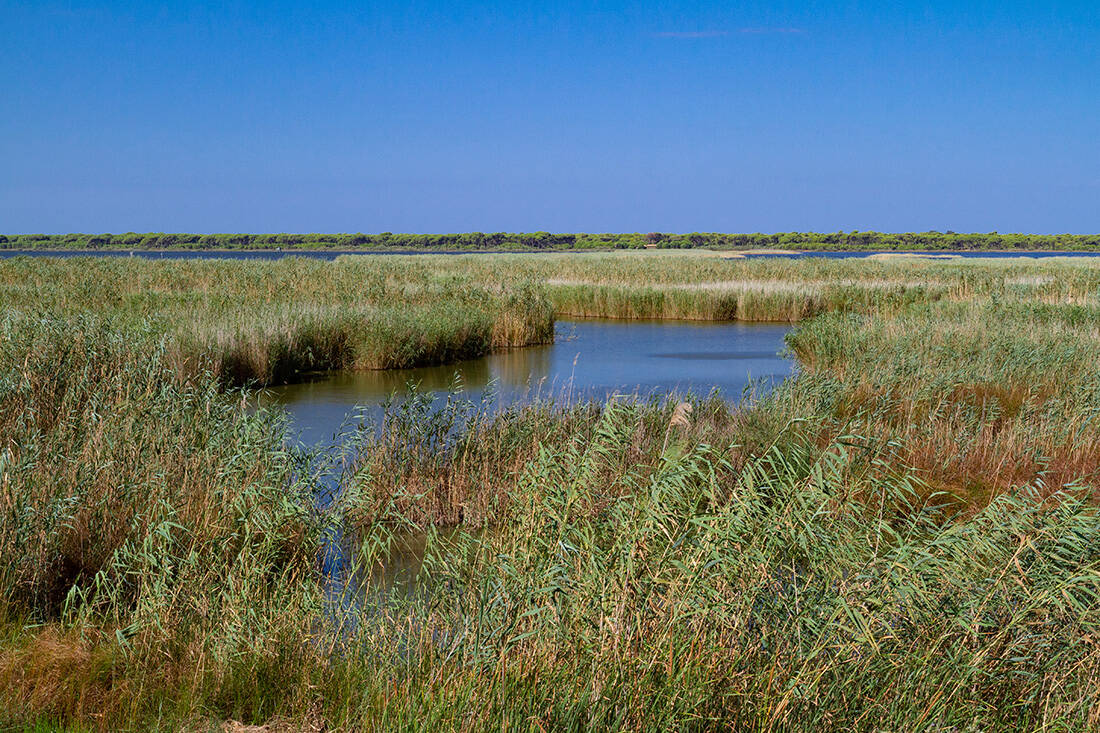
Both the wetland of Strofilia and the lagoon of Kotychio, in the prefecture Ilia now, they make up a living ecosystem a real wildlife refuge.
In terms of ecological importance, it is one of the most important habitats in the Mediterranean, hosting countless species of wildlife. This complex of water and land has for inhabitants endemic and rare species of birds, reptiles and mammals that are protected by international conventions.
The Strofilia forest itself is one of the largest pine forests in Europe. And in a privileged position, by the sea. Stagnant water and sometimes natural, sometimes artificial canals define its eastern and southern borders, creating a playful alternation of wet and terrestrial habitats.
The management body of the National Park tells us that the majority of pine cones found in the forest are 100-200 years old.
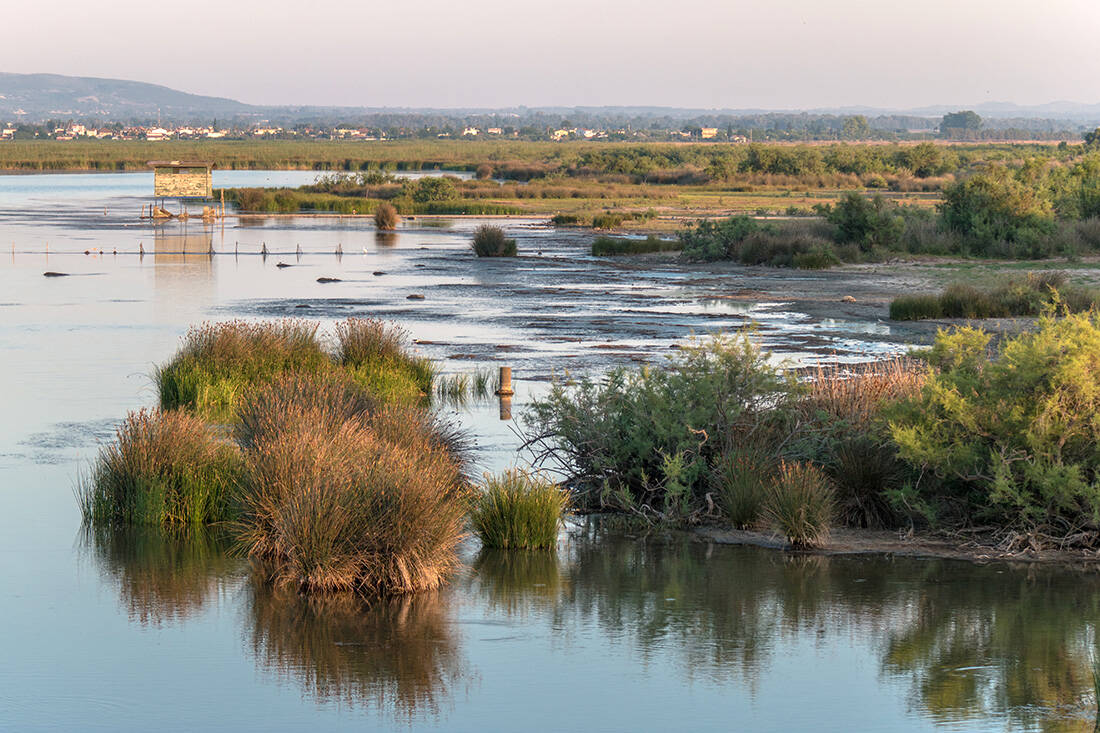
We usually call this whole network of land and water as Strofilia, although it is not one thing.
Kotychi (or Kotychiou) lagoon is its largest lagoon Peloponnese, with an area of about 7.500 acres. A narrow strip of sand separates it from the Ionian Sea, offering safe haven for rare species of flora and fauna. But also a place of rest for migratory birds.
The beautiful Wetland of Kotychi gives its place in terms of natural beauty in the Prokopou Lagoon, in western Achaia now. It is here to separate the forest from the sea, with the Black Mountains to the north and the Lamia swamp to the south.
It is a shallow lagoon of 1.500 acres of fresh water full of fish, sea bass, mullet and eels mainly. You will hear it called Lake Kalogria or Lake Strofilia, as it is in the forest of Strofilia. You can understand it from the dunes that surround it, but also the two rivers that flow into it.
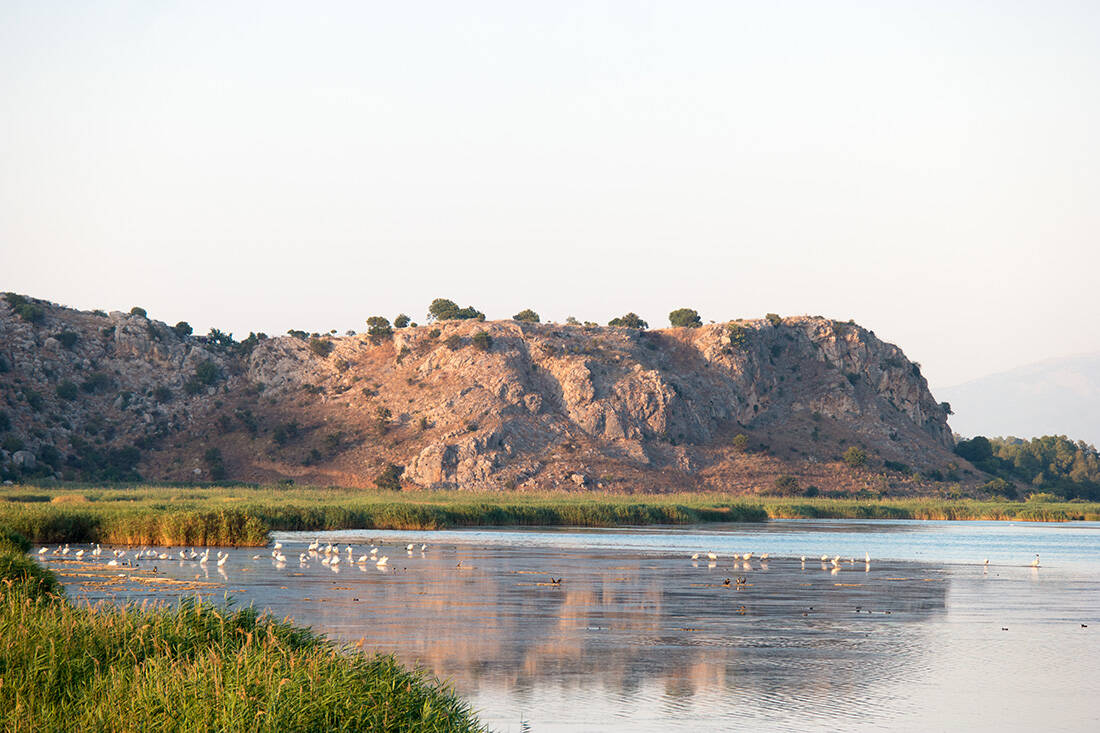
The Strofilia Forest hosts another Lake with fresh water, with its grace reaching as far as the Vatican! Papa Lagoon (4.500 acres), as it is typically called, in the wider area of the cape of Araxos, is full of sea bream. Which went to the Pope of Rome from the Byzantine years.
You will hear the lagoon of Araxos or the lagoon of Kalogria and on its west bank you will find a small and picturesque settlement, Paralimni. Having an idyllic beach at its feet, the Gianniskari.
In the complex of the National Park of Wetlands Kotychi-Strofilia we meet the Greek Loch Ness! For Lake Lamia the reason, south of Prokopou lagoon, a shallow and large swamp where tradition wants to live inside a monster, Lamia.
The Black Mountains, in the northern part of the National Park, next to the lagoon of Prokopos, cast their shadow on all this, although the so-called wet meadows steal the show.
You see around the lagoons and the swamps open areas of meadows that flood in winter and dry up in summer. Water swallows and nano gulls nest there.
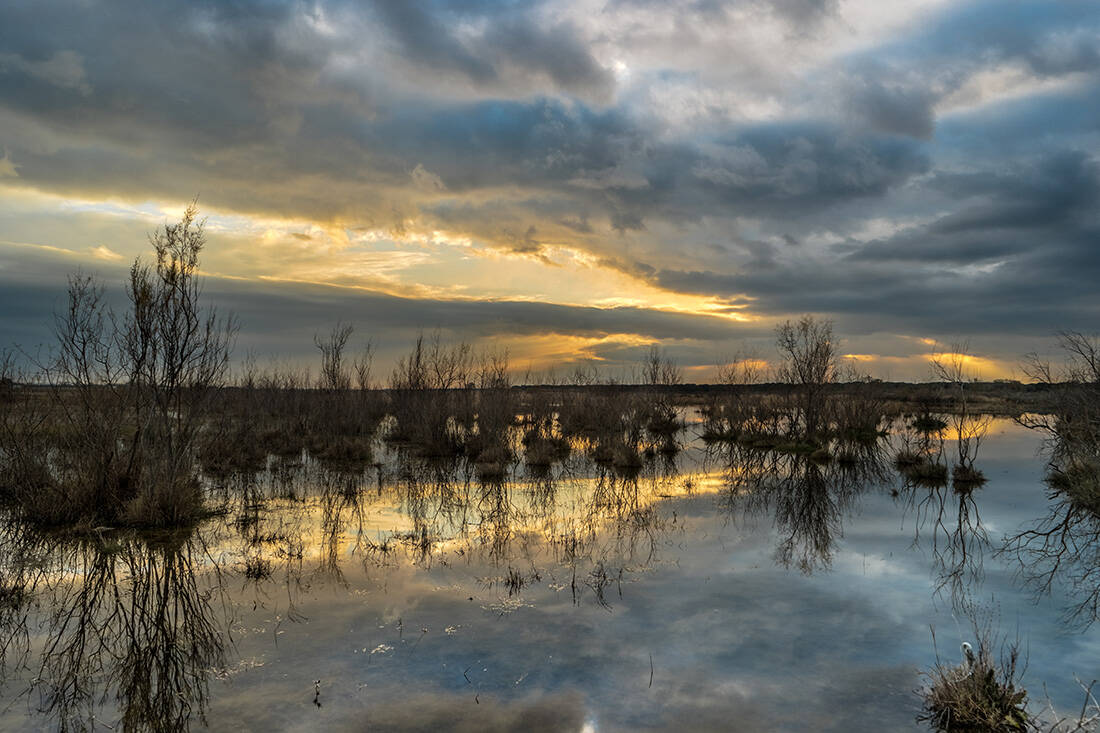
Lagoons, swamps, rivers, artificial and natural canals, forests and dense vegetation have turned the northwestern coast of the Peloponnese into an earthly paradise. Here the senses acquire the first word, with the sense of smell playing a leading role.
The Strofilia Forest is a unique opportunity for exploration and wandering. It offers hiking on enchanting trails in the Black Mountains, cycling routes, and even bird watching (especially in Kotychi).
Even sights made by man. Here you will find the Wall of Dymaion, north of Lake Prokopou, which mythology wants Hercules to build. It stands there since 1250 BC, in a naturally fortified location of the Black Mountains.
Here you will also find the Baths of Yrminis, old thermal springs where water gushes from a cave at the base of a rock. Here are the ruins of a small castle from the years of Frankish rule, at Cape Kounoupeli.
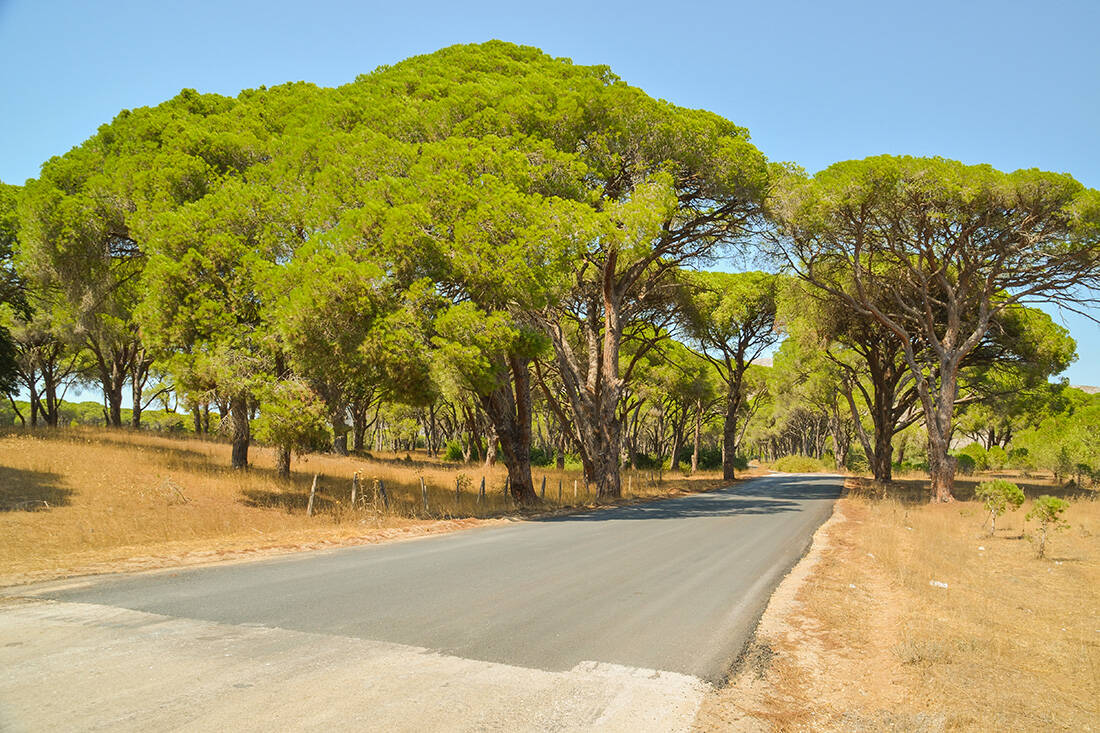
At some point, in this feast of colors and aromas, you will notice the dunes with the characteristic wavy shape and the dunes. These sand hills along the coast will introduce you to the coastal zone of Strofilia.
So you will come out of the rich forest to head to the beach and the guide will be the small clearings and these beautiful dunes.
You are now within the limits of Kalogria…
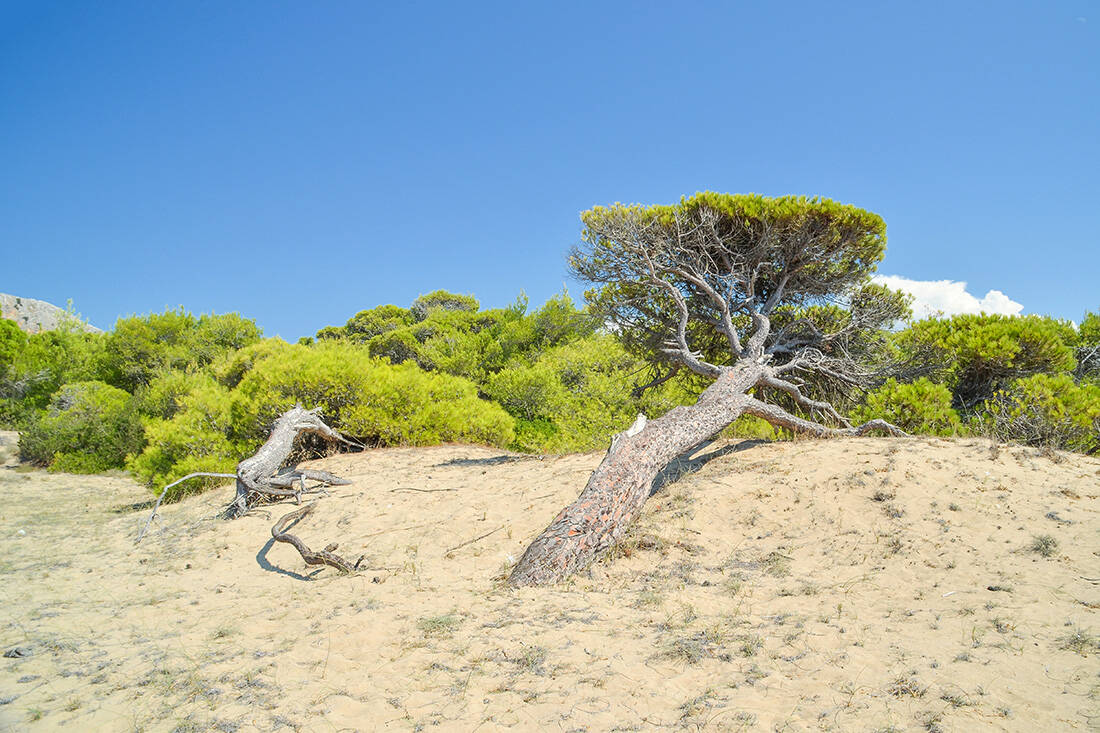
Kalogria (or Kalogria) of Strofilia has in abundance a number of features that make it effortlessly stand out on one of its most unique beaches Greece. The endless sandy beach has on one side the blue of the sea and on the other the green of the forest. A forest that embraces the coast along its entire length.
On its north side, the characteristic sand dunes enhance the African character of the landscape. In the background the canals, natural and artificial, that embroider the area of the habitat and let the fresh water mix with the salt of the sea.
Crystal clear waters and a special blue-green color are waiting to steal your heart. And all this in a natural environment reminiscent of another continent.
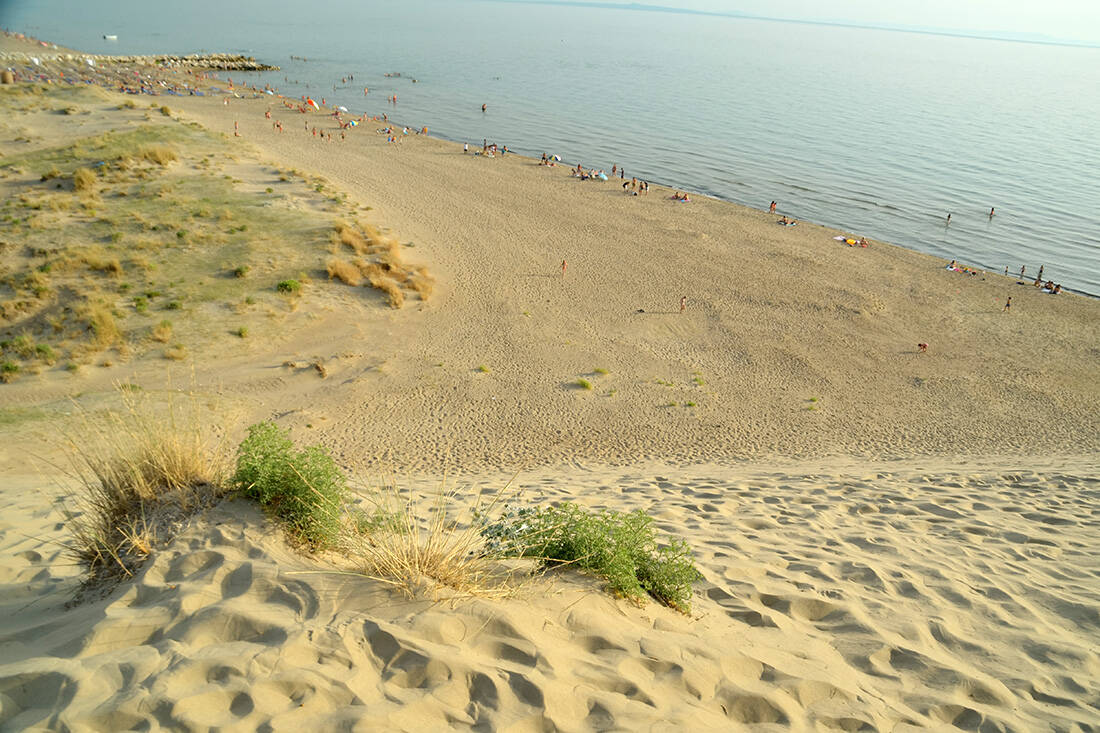
An oasis of natural beauty is the Nun, who manages to steal the show even in such a natural overproduction. Golden sand, which stretches for many kilometers, in an embrace of pines and pine cones.
The scene is extremely exotic, the closer Greece will ever get to the African savanna. The organization in a part of the beach and the tourist exploitation of the homonymous settlement have not altered the character of Kalogria.
If commercial development is not for you, along the National Park there are generous kilometers and kilometers of pristine sandy beach. In the same dream landscape…
